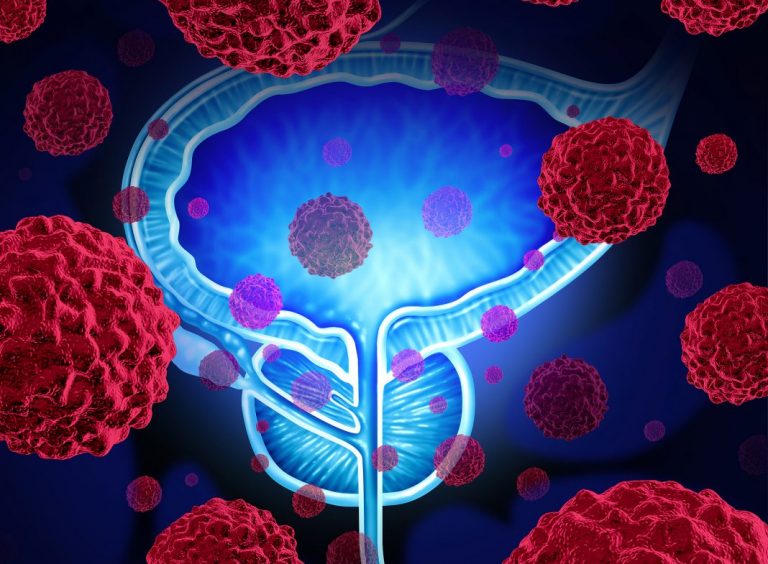
New mechanisms underlying a type of prostate drug resistance called lineage plasticity have been uncovered. This type of resistance emerges when cells in castration-resistant prostate cancers shift from a glandular to a neuroendocrine type, which can behave more like small cell lung cancer. he new research finds that E2F1 and BRD4 are critical for activating androgen receptor-repressed t-NEPC lineage plasticity. It also pointed toward a potential solution: BET inhibitors (BETis), which work against bromodomain and extra-terminal (BET) proteins.
The findings appear in Clinical Cancer Research. The research was led by Joshi Alumkal, M.D., head of the prostate and genitourinary medical oncology section at the University of Michigan Rogel Cancer Center.
Patients diagnosed with treatment-emergent neuroendocrine prostate cancer survive only one-third as long as patients whose tumors remain adenocarcinomas — glandular tumors. Furthermore, there are very limited treatment options for patients with treatment-emergent neuroendocrine prostate cancer.
“We set out to understand how tumors shift their program to become neuroendocrine, the influence of androgen receptor inhibition on this process, and ways to block the switch to neuroendocrine prostate cancer,” said Alumkal.
The researchers sought to answer whether modern prostate cancer drugs—the new and more potent androgen receptor inhibitors—might be so effective in shutting down the androgen receptor in some tumors that these drugs could actually promote the tumors’ switch to become neuroendocrine tumors. And the answer appears to be yes.
Through a series of experiments using laboratory cell models that were either sensitive to newer androgen receptor inhibitors or their counterpart cell models with acquired resistance, the research team found that androgen receptor inhibition was accentuating a neuroendocrine prostate cancer lineage plasticity program in the resistant cells—an effect not seen in the sensitive cells.
“Ultimately, we found that a critical difference that may allow the resistant cells to react differently and become more neuroendocrine is due to the way their DNA is organized and packaged,” Alumkal said.
In the treatment-resistant cells, the chromatin is organized in a way that’s more conducive to turning on that neuroendocrine program when the androgen receptor is blocked. It is as though the resistant cells have evolved to develop a rabbit hole through which they can change their identity and escape androgen receptor inhibition. We also found that high levels of a transcription factor called E2F1, which is involved in stemness and cell differentiation, is important for the resistant cells’ ability to switch identities.”
E2F1 is not targetable directly, but Alumkal’s team determined that E2F1 cooperates with BET bromodomain proteins, including the BET bromodomain chromatin reader BRD4, to turn on a neuroendocrine prostate cancer lineage plasticity program. Blocking BET bromodomain proteins in cell models stopped the activation of this program that drives the development of neuroendocrine prostate tumors, the research team found.
“When we treated a variety of treatment-emergent neuroendocrine prostate cancer cell lines with BET inhibitors, we greatly reduced the viability of these tumors, including tumors derived from patients,” Alumkal said.
Building on the findings in the current study, a larger, international, randomized clinical trial is being planned to evaluate the effectiveness of ZEN-3694 with a particular focus on men whose tumors responded poorly to androgen receptor inhibitors — tumors that may be less dependent on the androgen receptor.
This research included a host of collaborators at other institutions, including scientists from the Dana-Farber Cancer Institute at Harvard University, the University of Washington, the Fred Hutchison Cancer Research Center, the Helen Diller Family Comprehensive Cancer Center at the University of California, San Francisco and the Memorial Sloan Kettering Cancer Center.













